Eat Korean style, not walking but rubbing shoulders with locals around stalls or under cosy pojangmacha tents with a cup of soju (a Korean spirit).
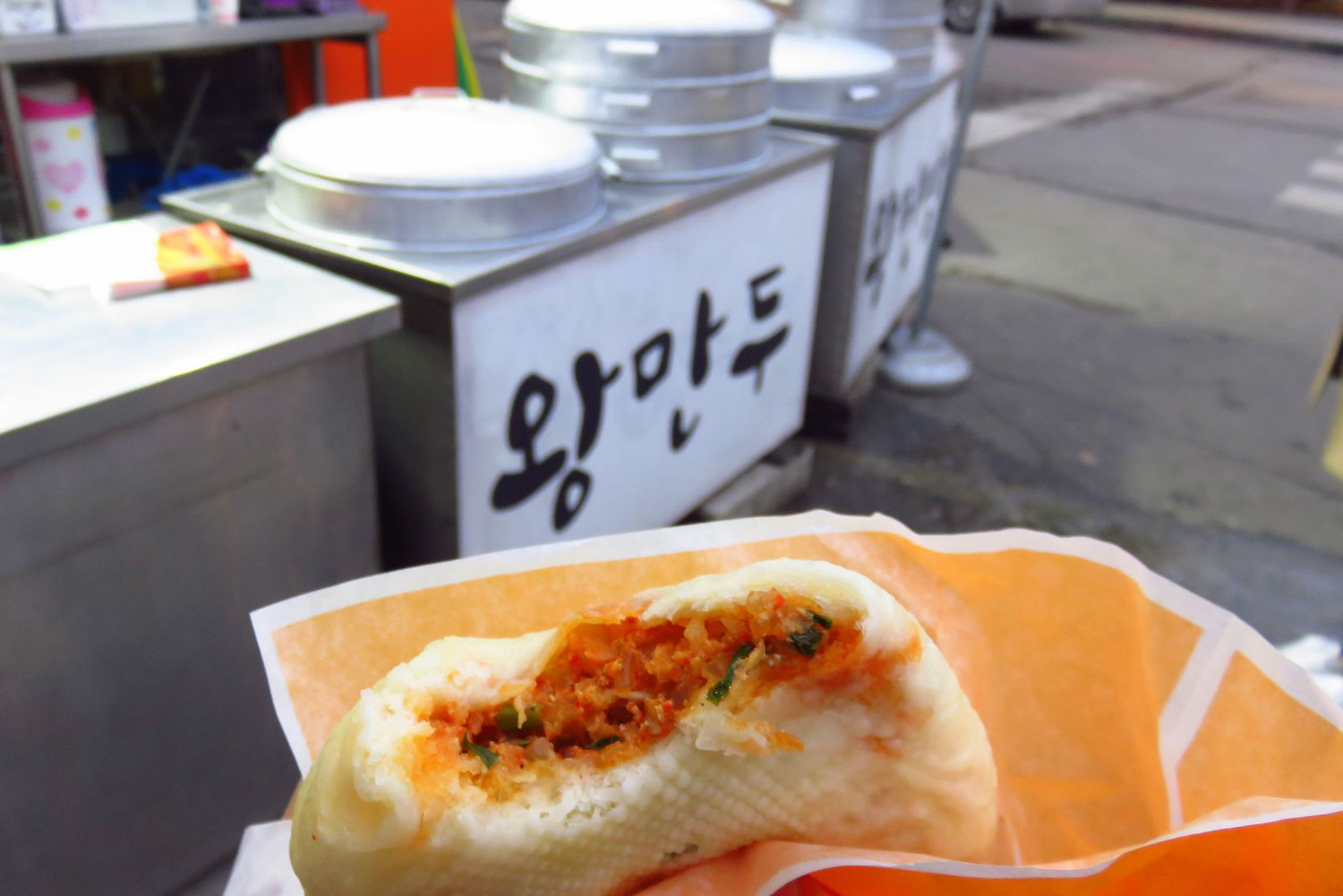
It’s an easy way to see and taste-test some Korean flavours in bite size. Here are some of the most popular to sink your teeth into on the streets of South Korea. Kimchi optional.
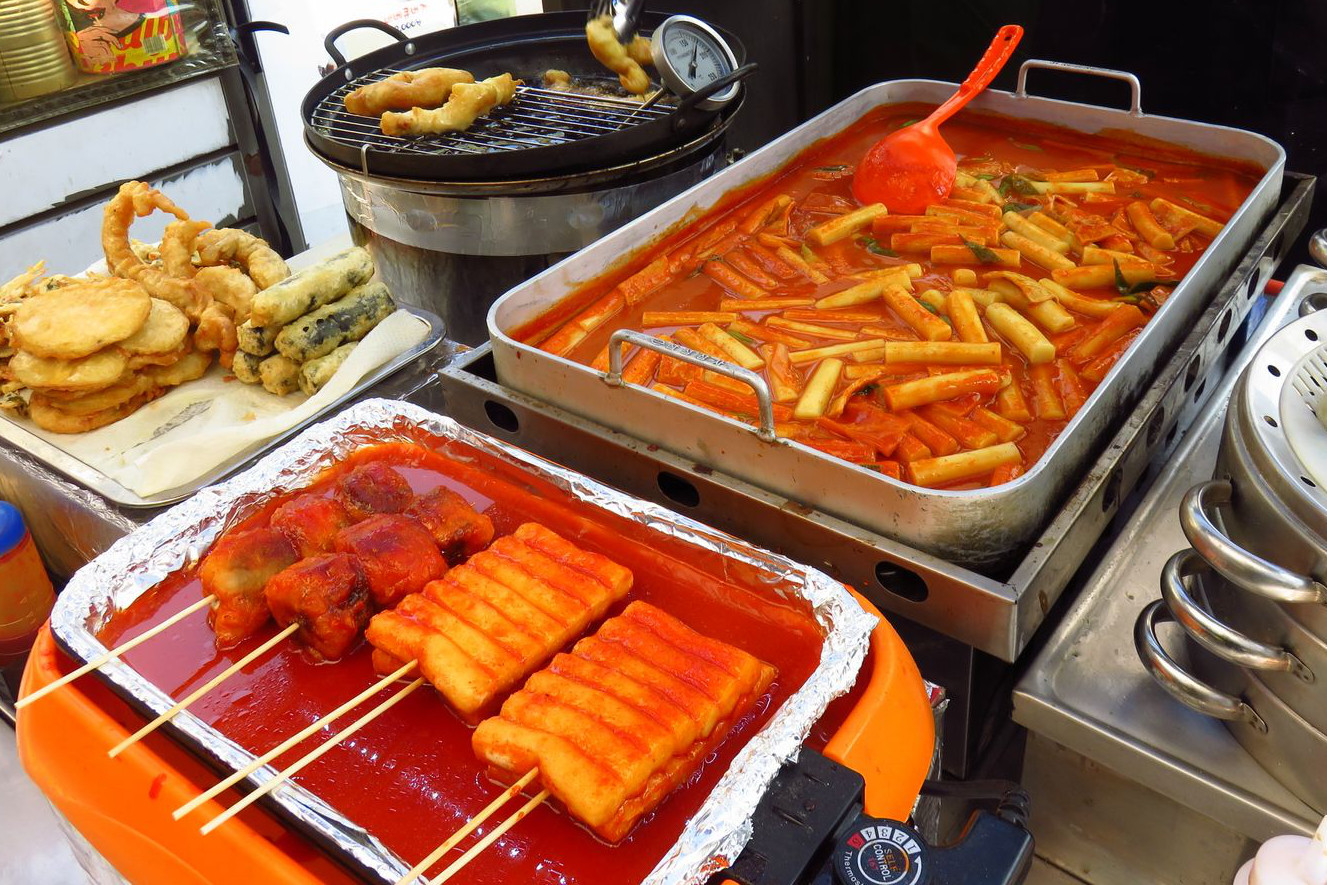
If you hate spice, look away now. Tteokbokki comes with a bright red or orange sauce called gochujang, made by fermenting soybeans and red chillies into a sauce that is used extensively in Korean dishes, most famously in bibimbap. Well into the night you will find street-stalls and pojangmacha stewing oblong pans of tteok (rice cakes that resemble overblown penne pasta) in the bubbling gochujang. Tteokbokki used to be just for the royal court, but now even partygoers will stop on the street to fill up on it. The chewy rice cakes taste quite neutral themselves and almost demand the spicy and sweet sauce. Dressed up tteokbokki variations add slices of fish cakes, boiled eggs or ramyeon (ramen or wheat noodles).
For a quick and convenient version, try tteokkkochi, where the rice cakes are threaded onto a skewer.
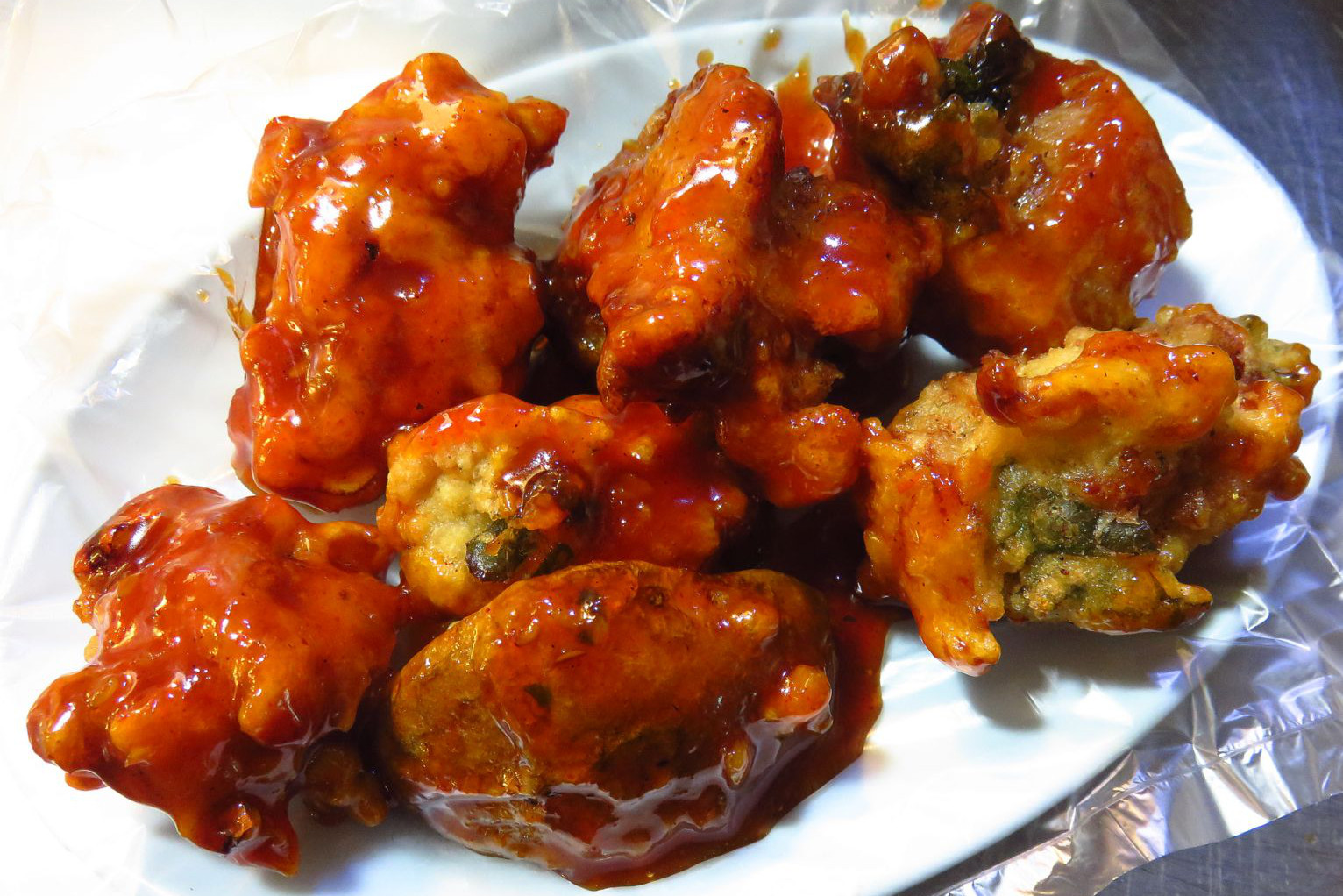
Yes, Korean-style fried chicken (yangnyeom tongdak) is a fusion food, the origins of which go back to when American soldiers met Korean tastes during the Korean War. But what a fusion, with tender, smaller chicken pieces drizzled with finger-licking spices. Or chicken that can go to town in spicy honey sauces, sesame seeds, garlic, peanuts and chilli flakes. The chilli-shy can try it with a straight up crunchy coating under a nest of grease-cutting spring onion threads. Something about combining Korean chicken with beer (mekju) is so right, with the beer and a side of pickles cleaning the palate for more. No wonder this combo, known as chimek (chicken + mekju), is popular in bars and casual chimek diners, but you’ll also find Korean chicken at street stalls. The small boneless bite-sized pieces are still double fried, Korean style, giving them that distinctive crackle. A small box is a great way to satisfy a craving or try parmesan flavour for maximum fusion.
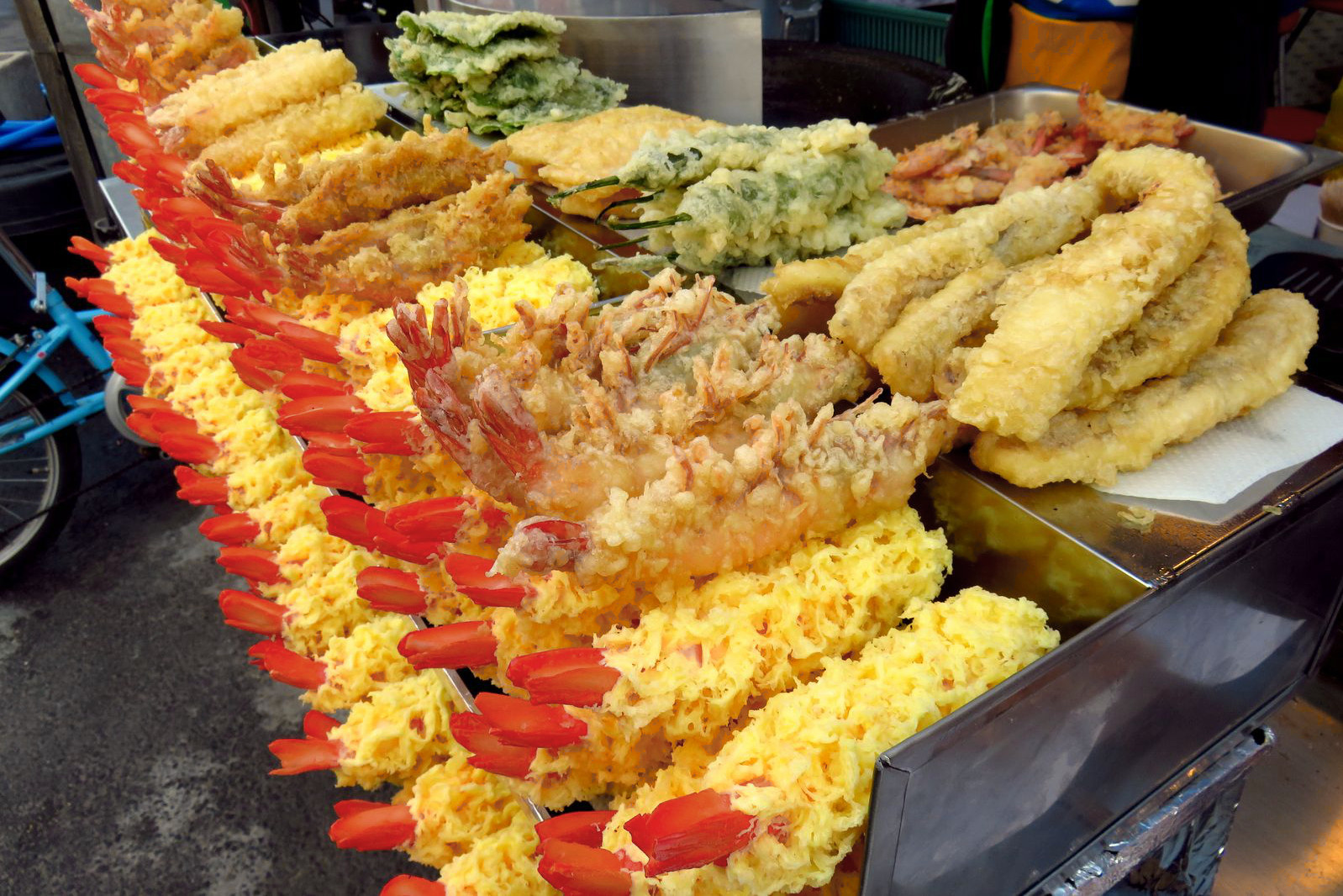
Koreans don’t tiptoe around frying their street food. Twigim are various ingredients that taste great fried in a batter (think Japanese tempura but more substantial) – succulent squid, a hash of vegetables, sweet potatoes and even boiled eggs. You will be hard pressed to find twigim outside of Korea, so fill up – pick up the piece you want with some tongs, and pay for the lot at the end.
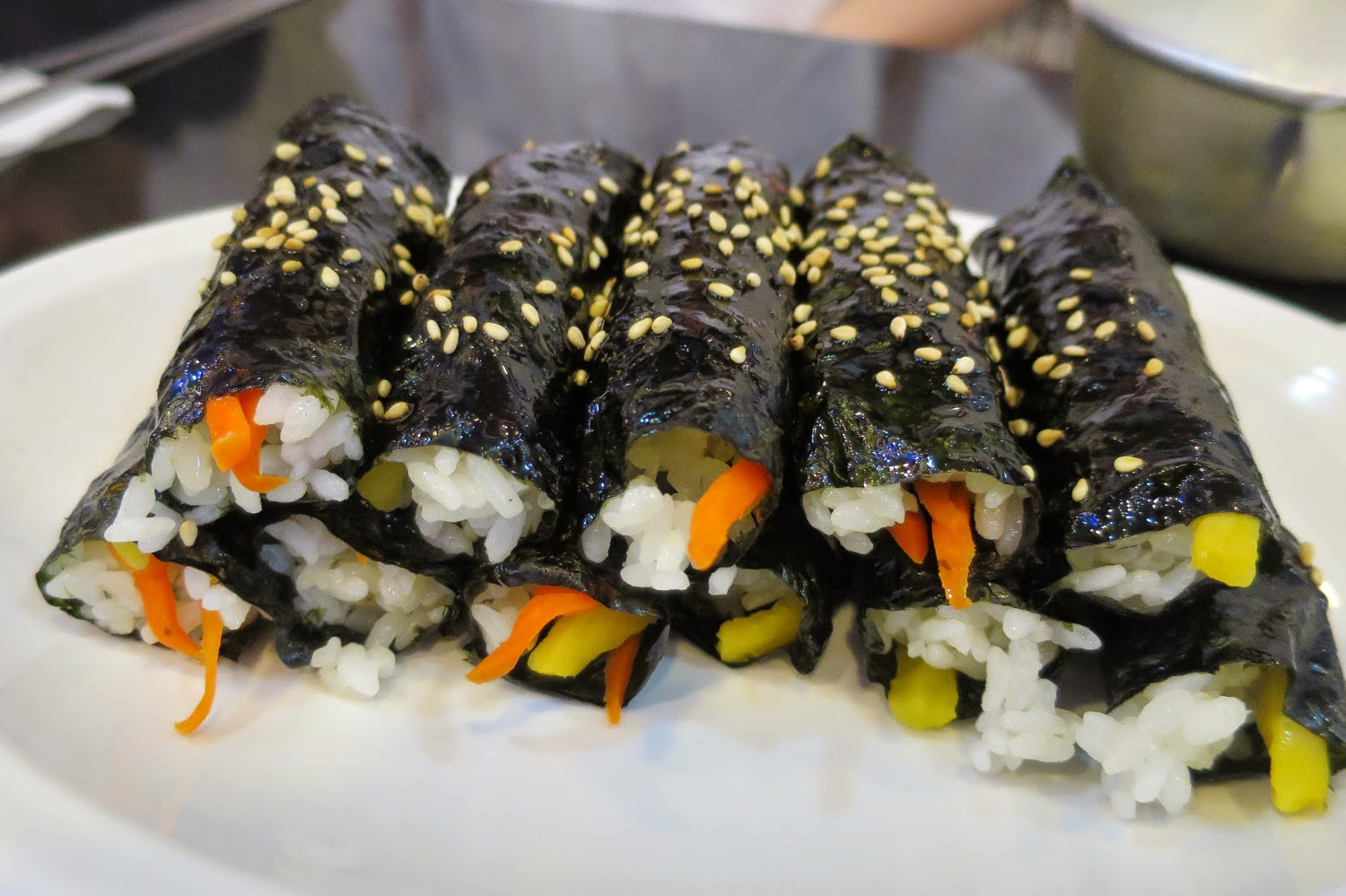
It looks like sushi, but this is its Korean cousin, gimbap – dressier with a seaweed (gim) wrap and glazed in flavour you can almost see. The rice (bap) and seaweed are lightly infused with perilla oil and the rolls are given kick with a side of kimchi. Fillings are much like sushi with meat, spinach, surimi, tofu, pickled radish and egg roll, but can include a leaf of butter lettuce or herbaceous perilla (kkaennip) rolled into the gimbap to lift the freshness. Gimbap are at their most mouth-watering as petite rolls, but they can come in hefty, rice-filled slices, which make for a speedy hunger buster. These rolls are ubiquitous at street stalls and markets, and fresh versions can even be found in convenience stores all over the country, making for a quick and healthy lunch.
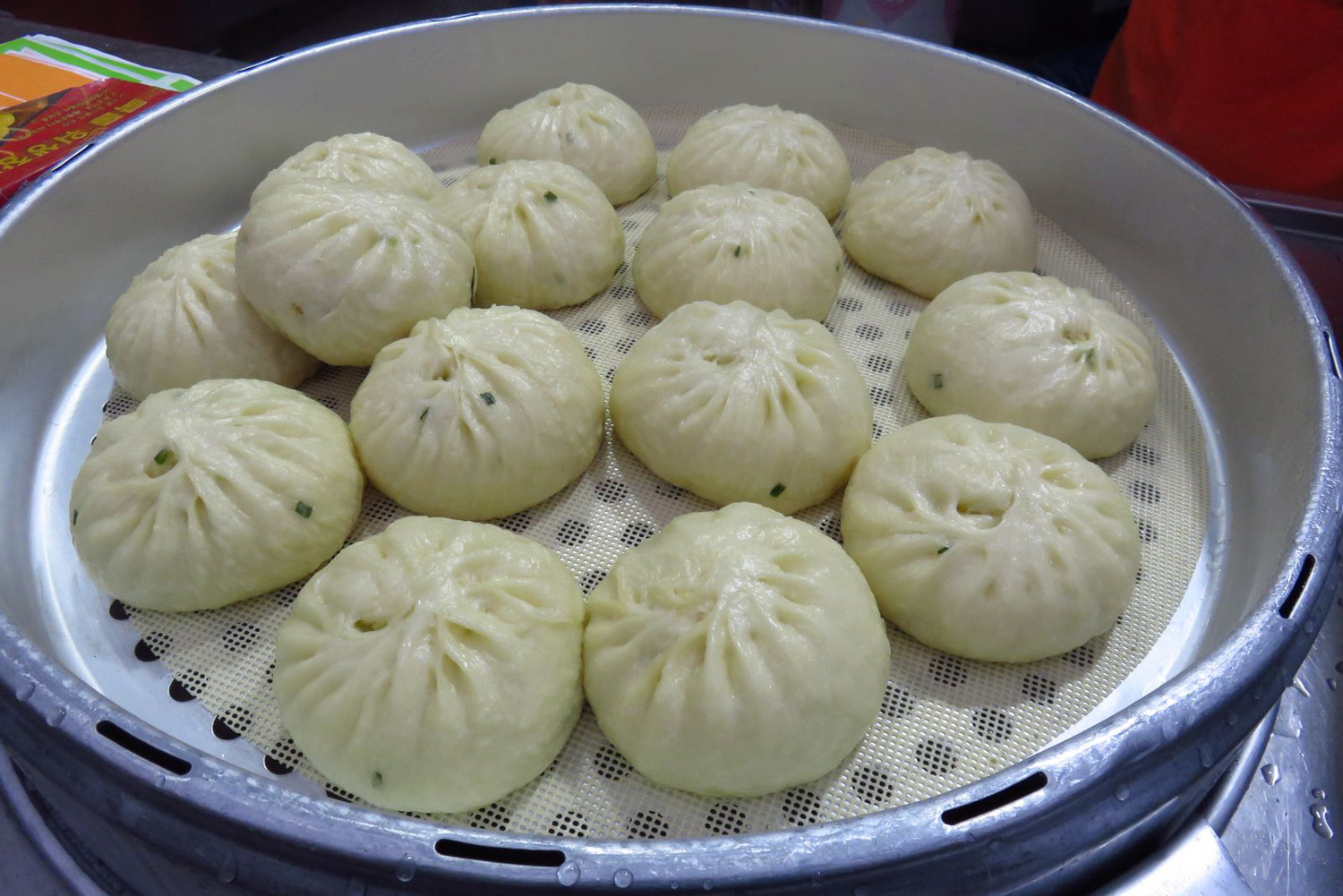
Korean dumplings (mandu) come deliciously fried or boiled in a noodle soup. As a street snack the most likely choice is kimchi mandu, which are filled with sweet onion, minced pork and a load of spicy kimchi that you can see shimmering orange through the soft skin. Kogi mandu are stuffed with a gingery minced pork and spring onions. These pockets of flavour are warm and delicious, but sometimes spicy enough to warrant a warning from the chef. Dumplings are served six or seven to a plate; dip in soy and vinegar sauce and chow down.
Also mandu in name but steamed instead, jjinppang mandu are soft fluffy buns with various fillings, usually coarse red bean paste, pork or pork and kimchi.
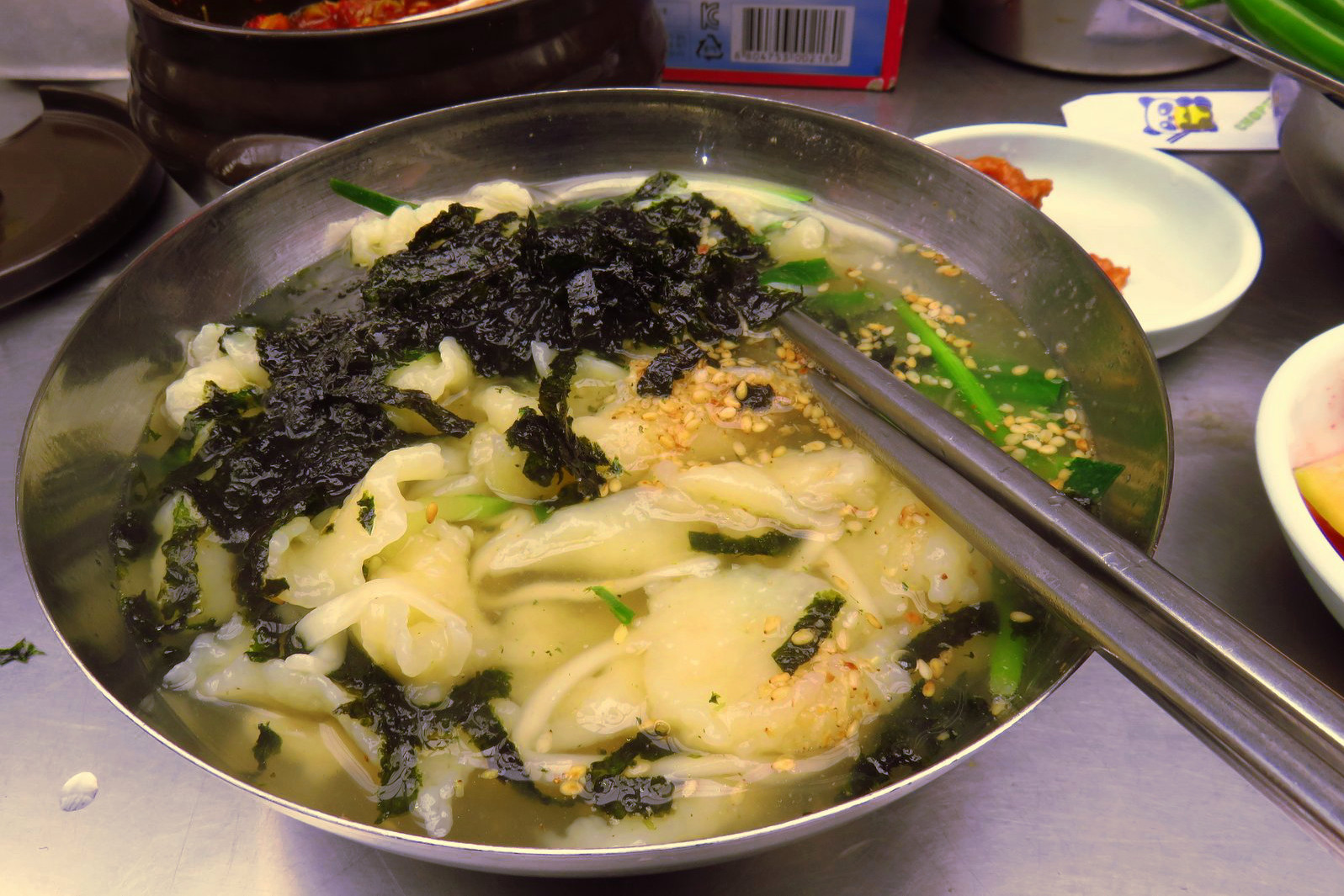
Bowls of noodle (myeon) soup might not sound like street food, but in fast-moving Korea, everything is ready for a quick meal between meals. Cool down with naengmyeon (a North Korean dish of cold buckwheat or sweet potato noodles with cucumber, radish, beef and a boiled egg in an icy broth) or keep warm and satisfied with sujebi (hand torn noodles in a clam and vegetable broth) and bites of raw green chilli.
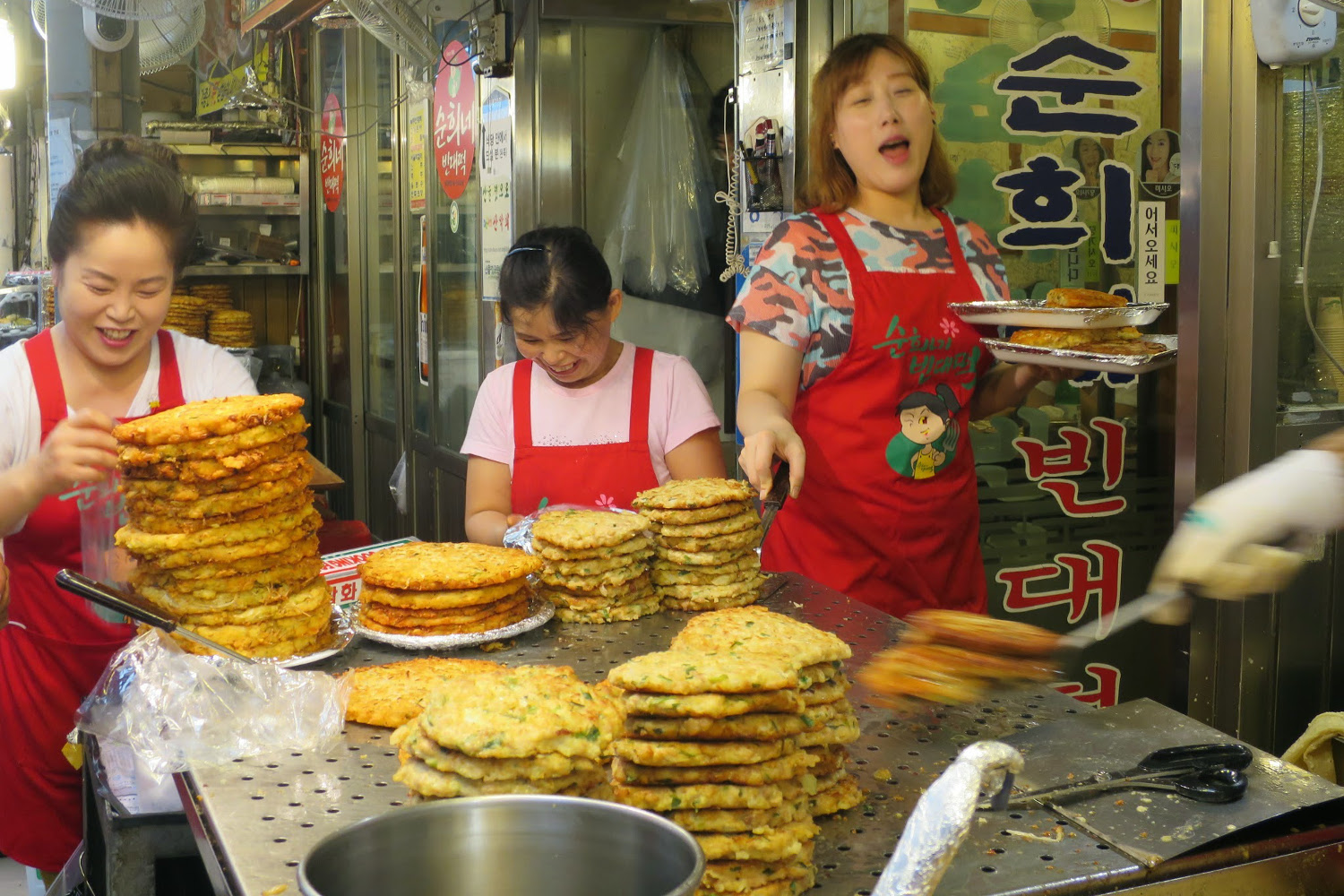
These savoury pancakes are a full meal on the go. The plain version is stuffed with leeks and green onions, while haemul pajeon are filled with lots of squid and sometimes prawns or mussels (depending on how fancy the stall), then fried in batter. Pass a slice of the cakey morsel through the soy dipping sauce while it’s still hot and fresh off the pan.
If you want something vegan and gluten free (without the dipping sauce) try nokdu bindaetteok, a traditional thick pancake made of a unique batter of mung beans. They are cheery yellow, puffy and especially popular at Gwangjang Market in Seoul.
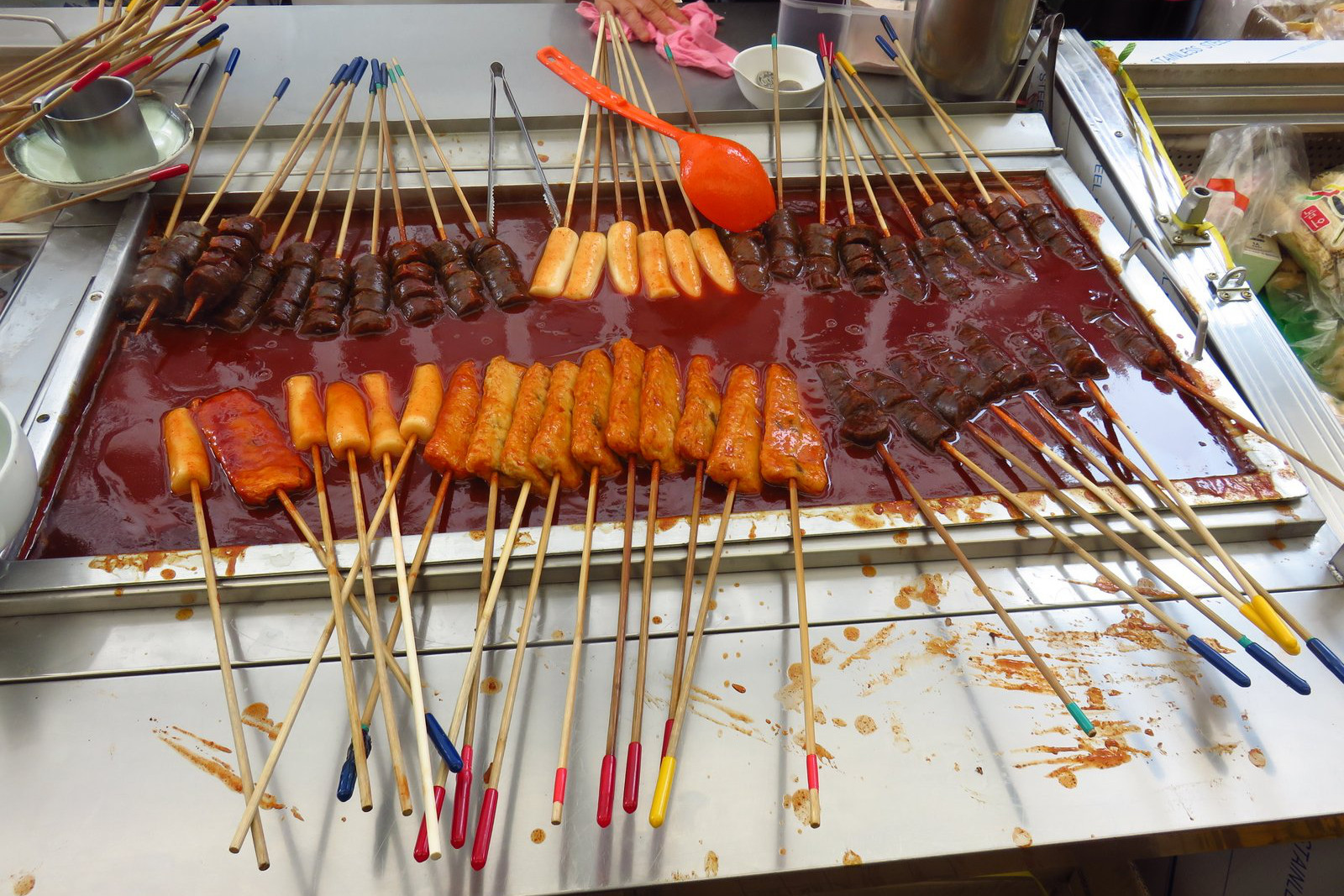
Odeng are hot, easy-to-eat fishcakes on a skewer. If you are spice- or meat-shy, this is your street-eat saviour. The main flavour is a soft and smooth fishcake, either elongated or flat and folded over, the skewers jutting from steaming vats of broth. This hot soup is a gentle seafood and spring onion-infused broth that Koreans say cures hangovers. It’s popular in winter and many Koreans drink the soup alongside soju to temper the alcohol’s fire. Everything is self-serve, just ladle the satisfying broth, help yourself to the skewers and the stall keeper will count up the sticks when you’re done. In larger places, you’ll find different coloured skewers that correspond to different prices on the price board.
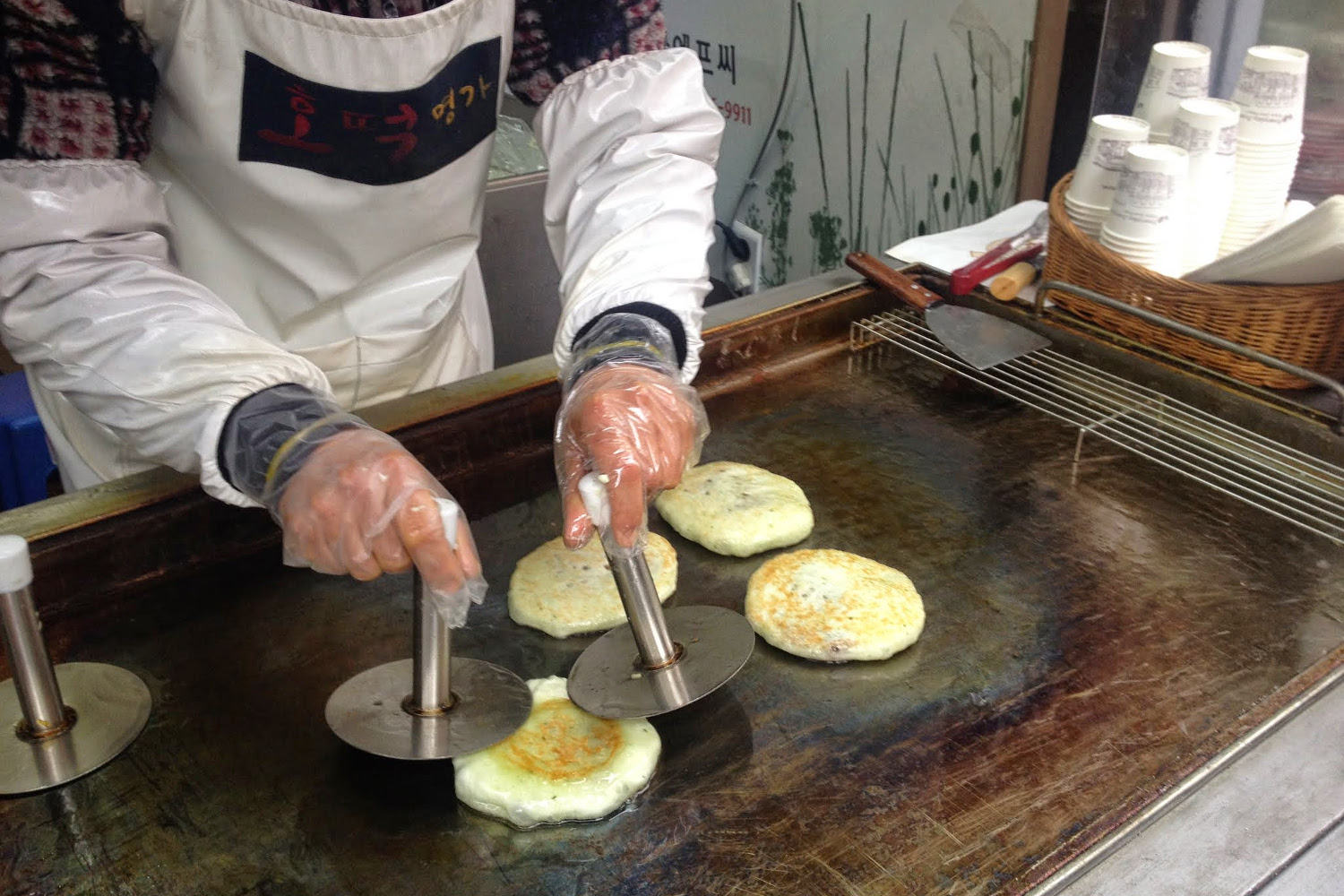
Sometimes called a Korean doughnut, but oh-so-much more. Hotteok are more like spiced, filled plump pancakes. The theatre of watching the balls of dough pressed and fried into discs until they are golden brown is half the pleasure. A winter crowd can form just to watch the hotteok, still shimmering with heat, being filled with a mixture of cinnamon and brown sugar, and sometimes sunflower seeds, which instantly turns into a grainy caramel. It’s hot stuff and one that burns when you inevitably can’t wait to bite into the hefty, fragrant pancake oozing with the delicious insides. Other fillings can include black sesame seeds, peanuts, red beans and honey. A sweet tooth’s dream.
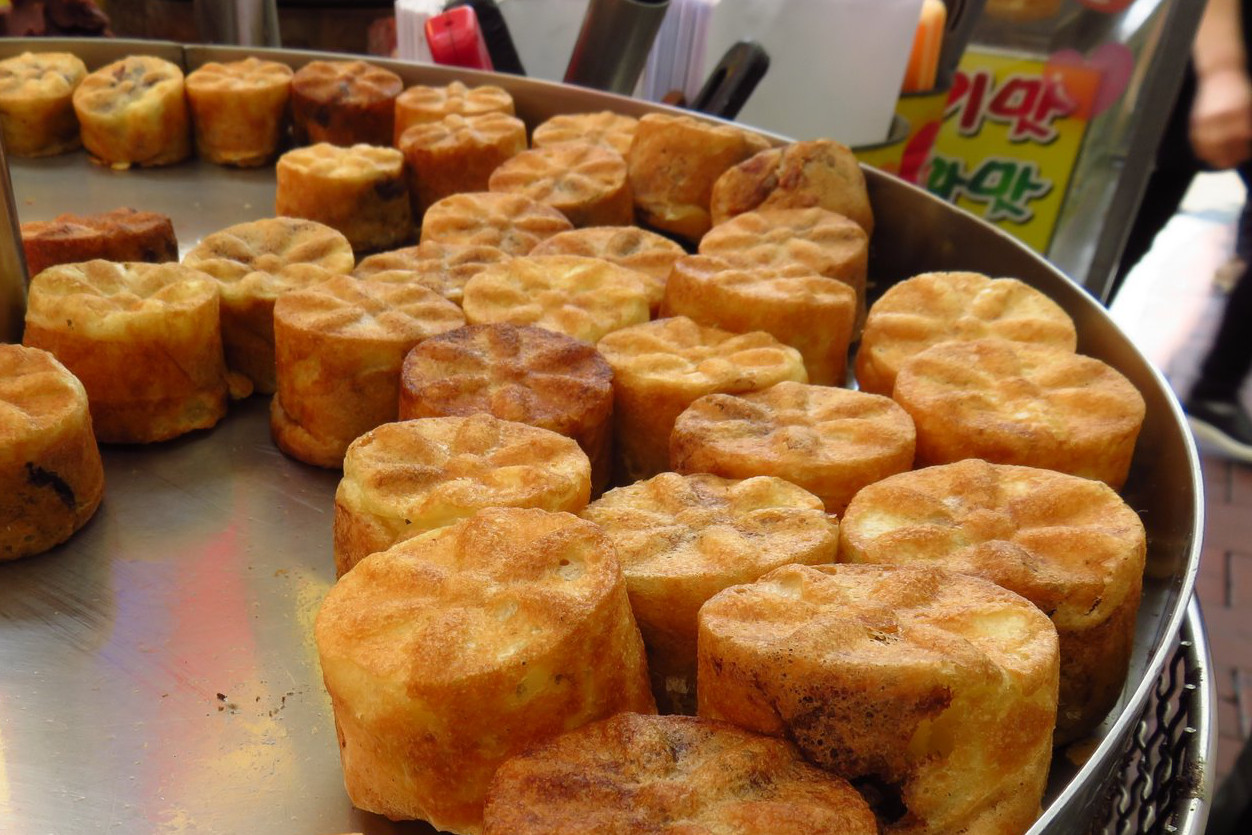
In any town in Korea, cute fish-shaped sweet cakes will be there on the streets. These bungeoppang have a golden brown, waffle-like exterior that is both soft and crispy to bite into, giving way to hot sweet red bean paste. There is no actual fish in bungeoppang, and you’ll find street vendors pouring a kettle of batter into moulds of other shapes, too, such as chrysanthemum-flowers to make gukhwappang.
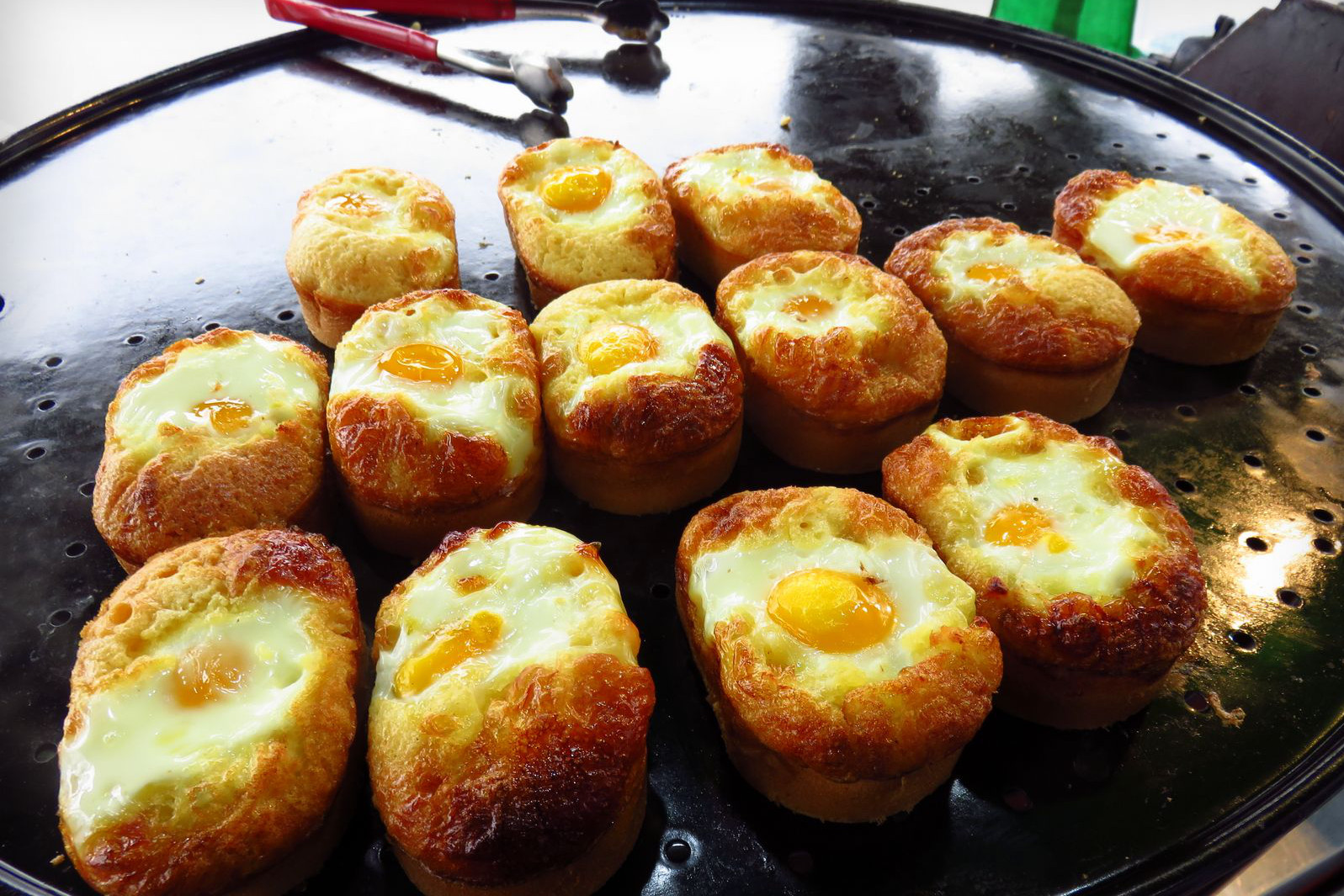
Literally 'egg bread', gyeranppang is an oblong golden muffin with a moist whole egg baked on top and a dusting of parsley. Dense and comforting, and both savoury and sweet, it’s a road to addiction.
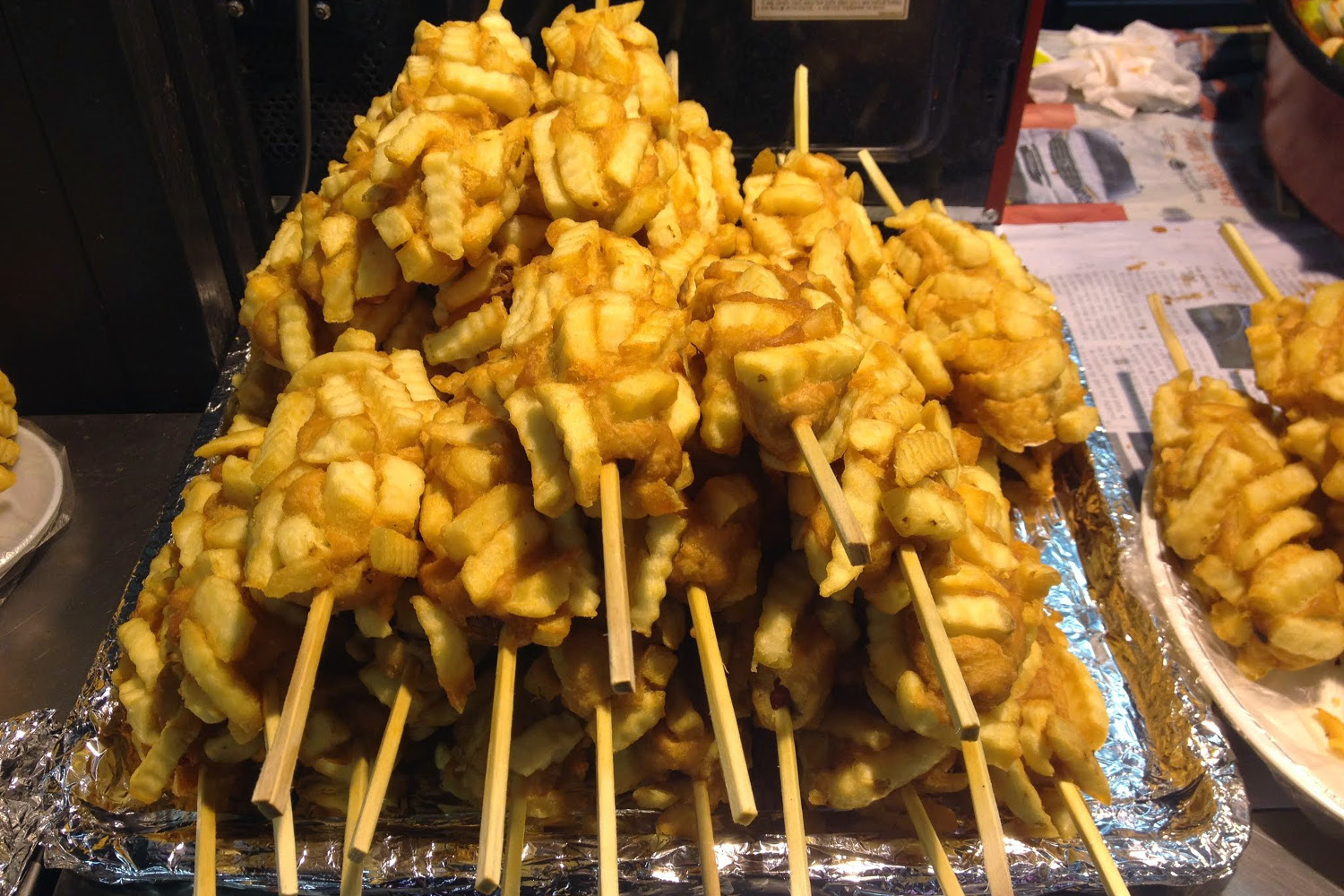
Korean street vendors know that putting anything on a skewer makes street food easier to handle with less waste. It can be as straight up as juicy corn cobs grilled on hot coals. Even envelopes of woodfired sweet potato or slices of sundae (blood sausage) can be eaten with toothpicks or chopsticks. Other street eats on a stick include:
Eomukba (‘hotbar’)
A skewer of fried fish cake with touches of carrot and perilla leaf (Korean shiso-like herb) wrapped around surimi. A fast-food cross between the fried snacks of twigim and the fish cakes of eomuk.
Gamja dog
A corn dog (battered sausage) further fried in batter with a crust of French fries (yes, really). The kind of fun food that reminds you of being at a fairground.
Dakkochi
Grilled chicken and spring onion skewers that hum with a smoky charred flavour under a sticky tangy barbeque sauce.